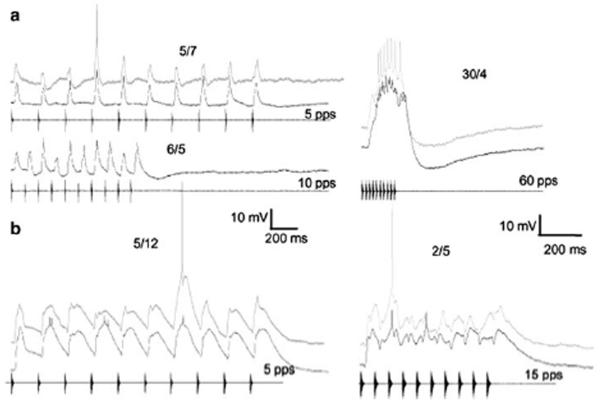Fig. 5.
Responses of representative neurons, both recorded from R. pipiens, that exhibited prominent depolarizations i.e., > 5 mV, to pulses presented at slow rates. a: Averaged responses (black traces) to 5 and 10 pulses/s (left) and 60 pulses/s (best rate) (right); (gray trace), response to a single presentation of the 60 pulses/s stimulus. Resting potential = −50 mV; carrier = 700 Hz (BEF); 57 dB SPL; PRR tuning function, gray diamonds figure 3b. b: Averaged responses to 5 (left) and 15 (right) pulses/s. Resting potential = −75 mV; carrier = 900 Hz, (BEF); 66 dB SPL; PRR tuning function, gray circles figure 3a. The number of spikes elicited over the number of stimulus presentations is shown above each trace

